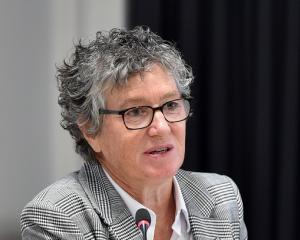
The call comes from scientists and conservationists backing a multimillion-dollar pest eradication plan for Maukahuka (Auckland Island), Chatham Islands and also for Rakiura/Stewart Island.
The $137 million plan has a huge funding hole. Philanthropic giving has so far raised only $11.5m, including one New Zealander donating $100,000.
Leading marine climate scientist Prof Gary Wilson, who holds posts at Otago and Waikato universities, said scientists’ ability to monitor the impact of climate change through studies on the sub-Antarctic islands could be impaired by pests and invasive species, which contributed a "compounding stress".
"Getting pest-free will improve the value of the islands’ biodiversity as a monitoring tool for assessing the impact of climate change," he said.
Dr Amy Liu, a postdoctoral researcher at Monash University who studies small endemic invertebrates called springtails that live in leaf litter, said that it was "very difficult to see the impact of climate change on them" due to the compounding factor of pests.
She supported pest eradication then regular springtail surveys.
"They are hugely important to the health of our soil and very sensitive to environmental change".
Dr Liu and Prof Wilson visited pest-ridden Auckland Island this month as part of a multi-agency conservation mission Operation Endurance this month that was joined by the Otago Daily Times.
The planned pest eradications are urgent to prevent species’ extinctions. On Auckland Island, which is infested with pigs, mice and cats, 25 native bird species can no longer breed, with only small, vulnerable populations clinging on to smaller islands nearby.
On Rakiura, which is 85% national park, one vision is to enable the return of the flightless Kakapo, which used to live on the island.
The islands with pest eradication plans are between four and 15 times larger than Campbell Island/Motu Ihupuku, the biggest New Zealand island that has already been cleared of predators. Campbell is 113sq km and was rid of pests in 2001.
The Department of Conservation’s national eradication manager Stephen Horn, who is leading the pest-eradication plan, said the impact of pests on biodiversity is the "priority to address, but having a place where you can measure climate change impacts is important as well".
The pest-eradication plan has been preceded by a feasibility study and is supported by the Island-Ocean Connection Challenge (IOCC), an international multi-agency effort working to spearhead fundraising for 40 globally-significant island ecosystem restorations around the world by 2030, including the islands in the New Zealand plan.
People can donate through the New Zealand Nature Fund.












